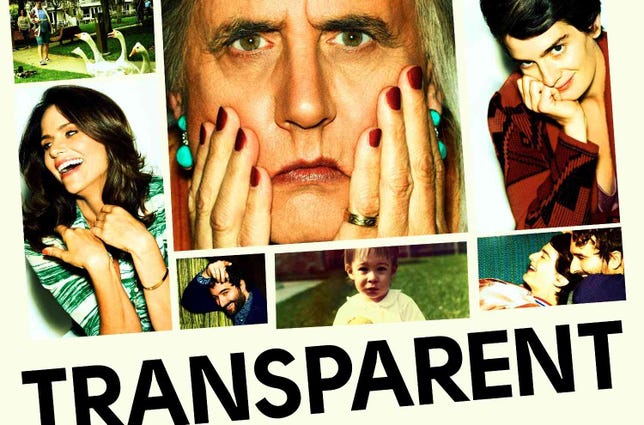After countless rumors and delays, Ultra HD “4K” Blu-ray is arriving this year. The initial movies have been announced, and some have even been selling before the official March 1 date.
But since most movies are shot on film or with 2K resolution for digital cinema, can these 4K discs really look better than Blu-ray? And what about the far easier (and cheaper) 4K streaming — will they be better than that?
The short answer is “‘Yes, probably” but the why and how may surprise you.
Ultra HD Blu-ray
First, though, let’s talk about what we’re talking about. Ultra HD Blu-ray, or 4KBD for short, is the next physical disc format and will sport Ultra HD resolution (3,840×2,160), HDR, Dolby Atmos, and more. I (and others) figured Blu-ray would be the last physical disc format we’d see, but here we are. Streaming hasn’t quite yet reached the quality (and revenue) vehicle we all assumed it would be by now. And though we tech-savvy folks don’t normally see it, there are a lot of people that still buy discs.
Also, there are also a lot of people that won’t be able to stream 4K even if they want to, thanks to the ultraslow broadband most of the US lives with.
Speeds will increase, and fewer people will buy discs, but we’re not there yet.
Movies
Related Articles
- Where can I get 4K Ultra HD TV shows and movies today?
- Ultra HD ‘4K’ Blu-ray: Here’s what we know
- TV resolution confusion: 1080p, 2K, UHD, 4K, 8K, and what they all mean
- When should you upgrade to a 4K TV?
- Why 4K TVs aren’t stupid (anymore)
Hollywood, on the other hand, has embraced digital like a long-lost lover. With few exceptions, digital has become the medium of choice in film and TV. Rarely are movies shot on film anymore, and TV almost never is.
While this has many benefits (not least cost), it puts us in an odd position when it comes to 4K Blu-ray. Almost nothing is shot in 4K; it’s 2K at best. So for the first time, we have a consumer media format that offers far greater resolution than most of the available content.
This has never happened before, since at the time the original Blu-ray came out, most everything was shot on film, which generally had greater resolution. So this has led many to ask, what’s the point of 4KBD if everything’s 2K?
Well, that’s not an outrageous question. It leaves out one important thing…
Upconversion
Unless you’re watching content that matches your TV’s resolution (for instance, 1080p Blu-ray on your 1080p TV), it goes through a process called upconversion (or scaling). For example, watching a DVD on your HDTV, the TV (or the player), will upconvert the DVD’s standard definition 480i to your TV’s high definition 1080p (it also has to deinterlace, but if you’re confused already you can skip that part). TVs have gotten pretty good at this, which is why most people don’t notice it. It’s not magic, but when done well it makes an image seem a little sharper.
However, the standalone hardware to do this before it gets to your home has gotten way better. Believe it or not, much of today’s “4K” content is really just upconverted 2K content labeled as 4K.
I’ll warn you — this is going to happen a lot for the foreseeable future. It’s almost infinitely easier to run a 2K movie through a scaler and call it 4K than actually go back to the original film negative (if there is one) and rescan it on a 4K machine. We were plagued by this in the early days of HD, too, but SD converted to HD 10-plus years ago looked horrendous. HD converted to UHD can look OK, and sometimes great.
How great? Well, at least some of the 4K movies you’ve seen already were upconverted 2K, and I bet you didn’t even notice. This is often because…
4K streaming isn’t necessarily better than 1080p


Amazon’s Transparent is available in 4K streaming
Amazon
Even though there’s 4K content available from Amazon, Netflix and a bunch of other places, it doesn’t always look that good. When our own David Katzmaier has tested a Blu-ray movie vs. its 4K streaming version side by side on identical TVs, he found that the difference was negligible.
And that’s if you have a really high-speed connection. Most services recommend at least 15 Mbps, and ideally more. While the new codecs, like H.265/HVEC are huge improvements over H.264/AVC, they can’t work miracles. Detail is going to be lost, noise introduced, and so on.
Which is to say, the same source movie will look better on 4KBD than it does via streaming, almost always. And the better the movie looks, the more likely it will look even better on 4KBD, because…
Film is better
Every time there’s been a new format, I get heaps of emails questioning the logic of the new resolution when “clearly” the current format is the best image quality possible. Yep, I got these emails when DVD got big, and again with Blu-ray, and yet again with 4K. “Why do we need Blu-ray when DVD is the best there can be?” is literally a question I’d get, and often.
The truth is, 35mm film is fantastic, and well beyond what was possible with DVD. In many cases (depending on a number of factors) it’s beyond Blu-ray as well. The irony is that older movies, shot on 65/70mm film have even more detail, and will likely look significantly better on 4KBD than they did even on Blu-ray (provided the get remastered for 4K).
So is “Weekend at Bernie’s” going to look better in 4K? Probably not. “Pulp Fiction”? Probably. “Lawrence of Arabia”? Almost certainly.
Which discs to get


“Chappie” is one of the first movies to be shot and released on Blu-ray in 4K
Sony Pictures
So with all that said, which of the first wave of releases shows the most promise? As in, what should you get to really show off your new player and TV? Here are our best guesses for right now, based on the info we could find.
If you’re looking for a complete list of what each 4KBD disc has (or doesn’t have), check out Reference Home Theater’s excellent Ultra HD Blu-ray Database.
- “The Amazing Spider Man 2”: 4K Digital Intermediate from 35mm film
- “Chappie”: 4K Digital Intermediate from Red Epic cameras
- “The Expendables 3”: 4K Digital Intermediate from Red Epic and Red Scarlet cameras
- “The Last Witch Hunter”: 4K Digital Intermediate from Arri Alexa XT Plus “3.4K” cameras
- “The Maze Runner”: 4K Digital Intermediate from 2K, 3.4K, and 5K cameras
- “Hancock”: 4K Digital Intermediate from 35mm film
- “Salt”: 4K Digital Intermediate from 35mm film
- “Sicario”: 4K Digital Intermediate from Arri Alexa “3.4K” cameras
- “The Smurfs 2”: 4K Digital Intermediate from Sony CineAlta F65 cameras
The other first-wave releases not on this list? 2K Digital Intermediate, meaning it’s a 2K movie upconverted for Ultra HD Blu-ray. Will those titles still look good? Probably. Will the above picks look better? Possibly — there are a lot of factors, but these have the best chance of looking the best.
It’s also worth pointing out that most special effects aren’t done in 4K. Most movies use additional cameras for special shots, and these aren’t always 4K. So it’s going to be a bit of a patchwork. We’ll eventually see a lot more movies shot on 4K cameras, with entire 4K production chains…but they’re a rarity at the moment. We’ll also see more 4K remasters, which will hopefully be 4K rescans of the original negatives (something Hollywood started doing years ago).
And please, please — don’t stoop to the “these movies are terrible” or “the discs are so expensive!” tripe in the comments. These were the exact complaints about Blu-ray, and DVD before it. More movies will get released, and the prices will fall. Such is the way of the world.
Bottom line
With both a lack of players and a lack of disks, there’s no real reason to jump into the 4KBD fray just yet. However, Ultra HD Blu-ray will, for the most part, look better than streaming and Blu-ray. How much better they look is going to depend on the original movie’s picture quality and medium, and how well it was transferred (or remastered) to 4KBD. This was true of Blu-ray and DVD as well.
Will there be 4KBDs that look no better than regular BD? Probably. Will there be some that look no better than streaming? Doubtful.
Will this be our last physical media format? Probably…but I said that last time, too.
Look out for an updated review of the first 4K Blu-ray player, the Samsung UBD-K8500, for our take on what 4K Blu-ray really has to offer.
Got a question for Geoff? First, check out all the other articles he’s written on topics such as why all HDMI cables are the same, LED LCD vs. OLED vs. Plasma, why 4K TVs aren’t worth it and more. Still have a question? Send him an email! He won’t tell you what TV to buy, but he might use your letter in a future article. You can also send him a message on Twitter @TechWriterGeoff or Google+ and check out his travel photography on Instagram.




